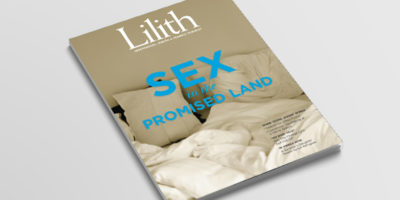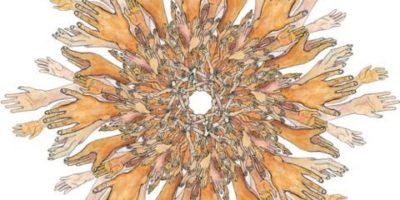What to follow now.
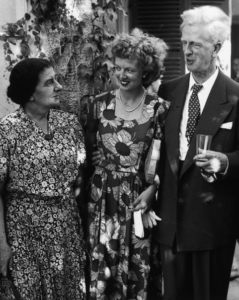
James McDonald and his daughter Barbara with Golda Meir in Tel Aviv, August 27, 1948.
A Voice Among the Silent
Shuli Eshel, a filmmaker whose subjects have been Israeli women soldiers, female athletes, and Israeli and Palestinian women in the forefront of the peace process, now focuses on a little-known Holocaust rescuer. James McDonald (1886–1964), son of Catholic immigrants, was League of Nations High Commissioner for Refugees and worked tirelessly to find safe havens for refugees fleeing Nazi Germany. He repeatedly warned world leaders — including FDR and the future Pope Pius XII — of the looming tragedy and was later appointed by President Truman as the first U.S. Ambassador to Israel. “Voice Among the Silent: The Legacy of James G. McDonald” documents aspects of his story from his meticulous diaries, discovered in 2003. Eshel notes, “McDonald’s bravery is a model for human decency and courage as relevant today as it was 80 years ago.” On public television and on DVD. avoiceamongthesilent.com
Mikveh, a Ritual Repurposed
Reclaiming mikveh — Jewish ritual bath — as a powerful tool for marking life events for women and men, and for all kinds of transitions (a big birthday or anniversary, ending a period of mourning, before giving birth, finishing a period of chemotherapy, starting a new job) is a trend that has picked up momentum over the past decades. A new pluralistic Jewish feminist organization in New York City, ImmerseNYC, facilitates individual ritual experiences at the mikveh. It also aims to model a diverse community where Jews support one another through life transitions with love and authenticity. It’s part of the growing movement of mikvehs around the world which reimagine how this ancient practice can serve people in broader ways. immersenyc.org
Sacred Rights, Sacred Song: A Concert of Concern
“I was too young for the civil disobedience of the secular ‘60s, but I want to sing my way through the civil disobedience of the sacred ’70s (as in the Jewish calendar 5770s),” says Israeli-American activist and musician Francine Gordon. Her “Concert of Concern” is a performance with orchestra and narration. Its original music aims to raise awareness of the work of activists in Israel to ensure the healthy modern Jewish democracy envisioned by its founders. sacredrightssacredsong.org
First Letters from Survivors
Researchers at Yad Vashem in Jerusalem are studying the first dispatches sent by Holocaust survivors in the days and months after the concentration camps were liberated. They wrote to tell loved ones they were alive. “These letters bring us their first personal voice,” said Iael Nidam-Orvieto, leader of the project and director of Yad Vashem’s International Institute for Holocaust Research. “They give us an intense glance at the way survivors felt and thought about themselves, their situation, and their future exactly at the time of liberation. We’ve never had that before.” A book of these remarkable communiqués is planned for the coming year. YadVashem.org
“A Family Haggadah” at 30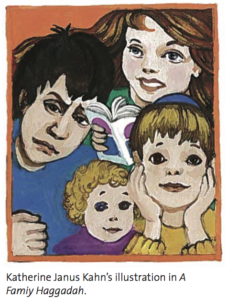
In 1975, Judye Groner and Madeline Wikler, founders of the pioneering publishing venture Kar-Ben, wrote and published My Very Own Haggadah for young children, which spawned requests for a haggadah for older children and their families. Educator Shoshana Silberman responded with A Family Haggadah, first published in 1986, which used gender-neutral language, included the story of Miriam and described “Four Children” instead of “Four Sons.” This Haggadah has Hebrew prayers and songs, English translation and transliteration, commentary and discussion questions. A Family Haggadah, revised several times, is still in print after 30 years, and has sold over a million copies. Karben.com
Linking Jewish and Muslim Students in New York City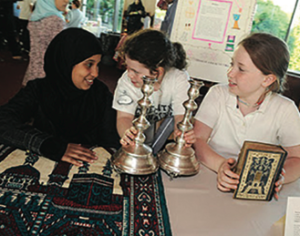
Educators at the Museum of Jewish Heritage have created a program in which Jewish and Muslim pupils in New York City get to know each other. They take trips to a synagogue and a mosque, and speak with a rabbi and an imam who show them the basics of each religion. Then the students bring an artifact or heirloom from home that represents their religious or cultural background, present it to the group and display it in a public exhibition, the Interfaith Living Museum. “I get so excited to see Muslims and Jews working together, learning together, and creating peace amongst ourselves,” writes blogger Ameenah Drammeh, recent graduate of the Islamic Leadership School in the Bronx. For more, contact Dr. Paul Radensky, at the Museum of Jewish Heritage, pradensky@mjhnyc.org. mjhnyc.org
Chava Rosenfarb, in Yiddish
Chava Rosenfarb (1923–2011) was a noted Canadian Yiddish writer and a major Holocaust literary figure. In a new DVD, Chava Rosenfarb: That Bubble of Being, she discusses her life in Lodz, Poland before the Holocaust, her years in the Lodz Ghetto, in Auschwitz, in Bergen-Belsen, and her later career as a Yiddish writer in Montreal. This interview with Anne Fishman Gonshor exposes a rich vein of female creativity in Yiddish culture. In Yiddish with English subtitles, 75 minutes, with a bonus feature of 35 minutes of Rosenfarb reading from her poetry and prose with translations by Kathryn Hellerstein. Produced by the League for Yiddish. leagueforyiddish.org
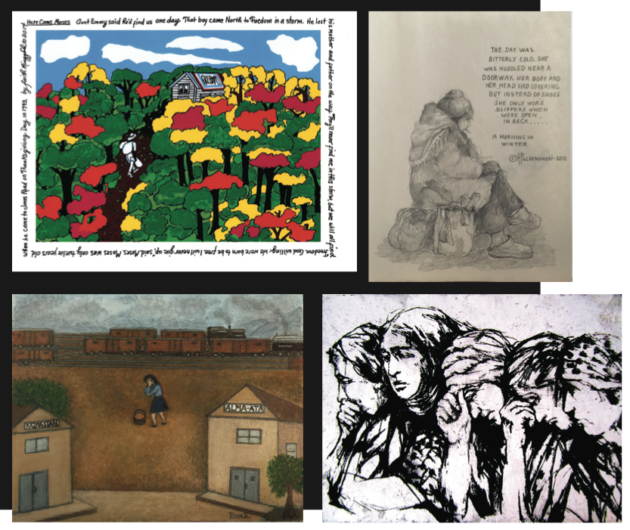
Clockwise from top left: Here Comes Moses by Faith Ringgold, The Day was Bitterly Cold by Hedy Pagremenski, The Mothers of Beslan by Elizabeth Langer and The Missed Train in 1941 by Riva Bell.
Evil, conscious inhumane acts by individuals or groups, has long preoccupied artists. Laura Kruger, curator of this timely exhibition at Hebrew Union College in New York, asks provocatively in the catalogue: “Who is the hero? Who is the tyrant? Are the seeds of evil latent in a hero?” Of the 49 artists in this show, a significant majority are women, among them Andi Arnovitz, Helène Aylon, Debra Band, Judy Chicago, Carol Hamoy, Tamar Hirschl, Margalit Manor, Meadow, Linda Motzkin, Jacqueline Nicholls, Deborah Ugoretz and Grace Bakst Wapner. Through June 30, 2016 at Hebrew Union College-Jewish Institute of Religion New York Museum. huc.edu/research/museums/huc-jir-museum-new-york
“Stereotype Vulnerability”
In Israel, despite the country’s renown as the “start-up nation,” only 20% of employees in its high tech industry are women! Israeli Wexner Fellows identify a root cause of this gender gap, caused when few high school girls take upper-level science, technology, engineering and math courses. They blame “stereotype vulnerability,” in which parents, teachers and boy peers don’t believe girls will be good in these areas. So three schools in Beersheva are piloting a program to change things for all girls, not just those who exhibit special skills. wexnerfoundation.org/blog/the-women-in-technology-project
Compiled by Naomi Danis. For more, follow Lilith on Facebook and Twitter, and sign up for Lilith’s free email newsletter. Send ideas for this section to info@Lilith.org.

